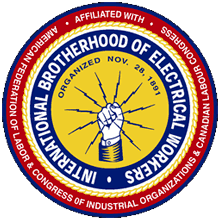May 21, 2014
By Joe Maniscalco
Editor's Note:
This is the first in a series of articles focusing on NY State Labor Law 240 and efforts to rewrite the protections it offers injured workers.
New York, NY – At this moment, profoundly injured construction workers throughout the state are painfully struggling to put the pieces of their shattered lives back together – but many of them might never have even gotten a chance at recovery if proposed changes to New York's Scaffold Law were enacted.
"I can't work for more than a half-hour at a time," says George Nechifor, 46. "There's not a single job in the world for me now."
Life for the Dutchess County father of two was irrevocably changed after falling from a scaffold while on the job a few years ago. Today, Nechifor still suffers with bouts of intense pain, but is at least heartened to know that his wife and two small children – ages 4 and 10 – have access to economic resources. Even if his own ability to provide for them, has been seriously derailed.
"I'm trying to keep my hopes alive,” Nechifor says. "At least the family is taken care of. But for me, there is no relief.”
New York’s Scaffold Law, also known as Labor Law 240, makes property owners and contractors liable for the accidents that occur on worksites that they control should workers fail to be provided with proper safety equipment.
Each year, according to the New York Committee for Occupational Safety & Health, roughly 40 workers are killed in scaffold-related accidents across the United States. Thousands more, like Nechifor, are terribly injured.
New York's Scaffold Law, however, helped Nechifor succeed in the lawsuit that followed his life-altering fall. But worker advocates now fear that if the large and powerful construction firms pushing to gut New York’s Scaffold Law are successful – defendants in accident cases will enjoy a "built in defense" that even the most adroit personal injury attorneys will be hard-pressed to surmount. Leaving injured workers like Nechifor and his family, in an additional world of hurt.
“It will give them a built in defense that will come into play in almost every single case,” says David Perecman, chair of the New York State Trial Lawyers Association’s Labor Law (Construction Accidents) Committee, as well as the head of his own top-flight firm. “There will be very few scenarios where they are not going to be able to say, 'Did you inspect [that scaffold]? Why did you go up on it if it wasn't secure?”
There are reams of safety regulations and procedures presently governing construction sites across the state. But in the real world, job sites prize speed and expediency. Time is money – and money is always the bottom line.
“The boss sets the Modus operandi,” Perecman says. “And it’s always about time. The worker who does things to keep the job moving, is the worker that gets called back.”
Brian Pickering, 37, now volunteers his time at a local animal rescue shelter walking dogs. But before the scaffolding-related accident that permanently locked his elbow in place and made straightening his right arm impossible, the Oceanside resident was a Local 361 member with modest dreams of retiring after a long and challenging career as an ironworker.
Those dreams have all since been dashed.
According to Pickering, the campaign to "reform" New York Labor Law 240 is simply a cynical effort to lessen the contractor’s responsibility, and foist it onto individual workers like himself who really don’t have any control over their work environment.
“They might not have a gun to your head, but in essence, if you don't do what you're told, there are a hundred guys out there waiting to take your job,” Pickering says.
The pressure on non-union job sites is even greater, and despite voluminous regulations to the contrary, those in the construction industry know that worksites don’t shut down while waiting for a particular safety ladder or missing scaffold-locking device to arrive.
“All of [our clients] say, ‘We have to get the job done – [the bosses] are rushing us to get it done.’ Well, they’re getting it done,” says John Merlino, an attorney with Dinkes & Schwitzer – another top New York City law firm that has successfully secured hundreds of millions of dollars for its injured clients. “We've had clients who where given harnesses, but the harness was missing a strap. Or there was no place to tie off. They got injured. What happens then?”
Back in 2008, Christopher Gunn was a 28-year-old ironworker with Local 40 enjoying his dream job, and getting set to marry the love of his life. But five years long years after suffering the fall that sent him plummeting 25-feet onto his head, Gunn was still dealing with the realties of having a severed spinal cord, severe brain injuries and a host of other life-threatening complications.
In Gunn's case, the headline-grabbing verdicts and multi-million dollar judgments that critics of New York Labor Law 240 delight in skewering, don’t look like very much.
As it stands now, attorneys for injured workers say that defendants hoping to duck liability for the accidents that occur on their worksites, already come up with the most cockamamie excuses in an effort to shift blame onto injured workers.
Perecman cited one particularly laughable case where a defendant tried to argue that an injured worker tripped and fell because the man was wearing shorts instead of long pants in the summertime – and that the lack of sartorial covering had actually caused his shoelaces to become untied.
Weakening New York’s Scaffold Law, worker advocates fear, will only open the flood gates wider, and give “hurry up, and get it done” construction firms more opportunity to pin virtually every inevitable accident on injured workers.
“All they are going to do is give license to the construction industry to say, ‘Let them fall. You can always blame them,’” Perecman says.



